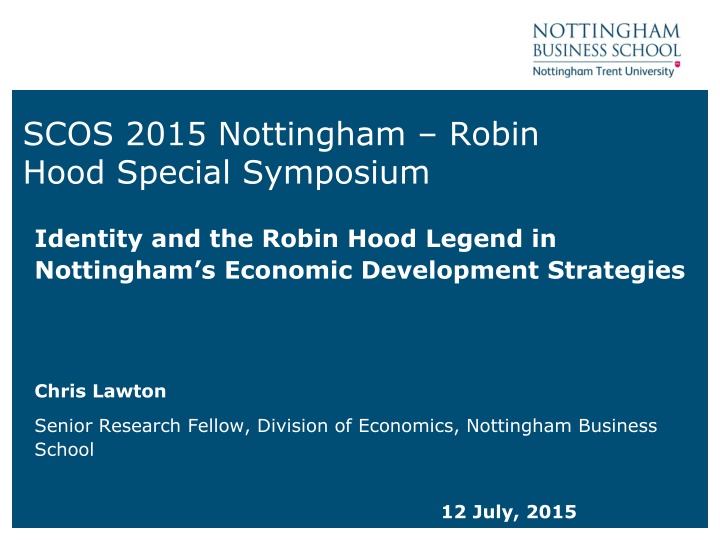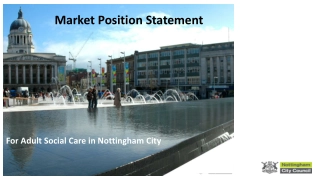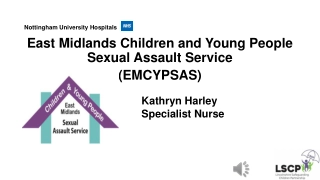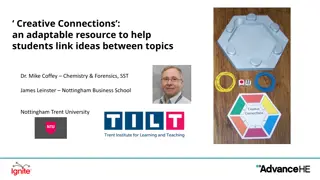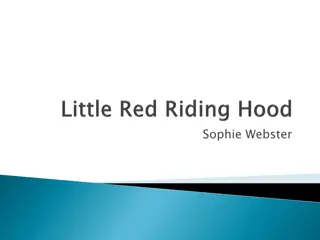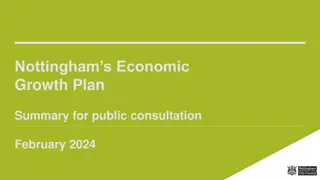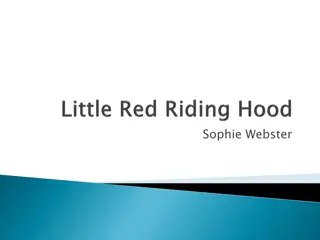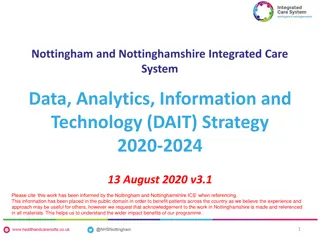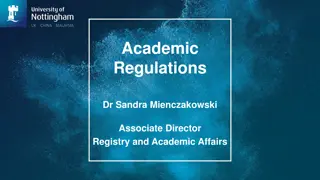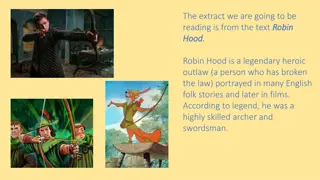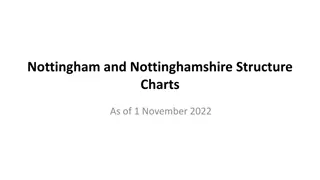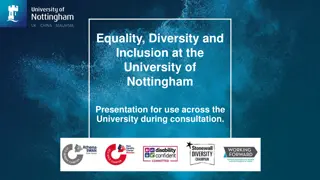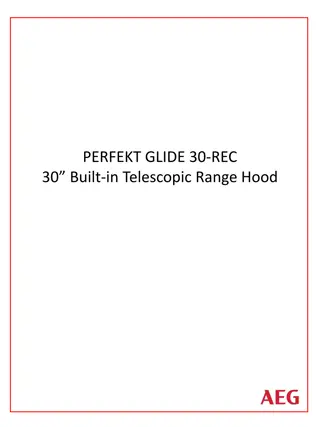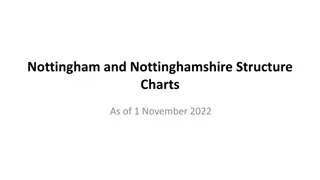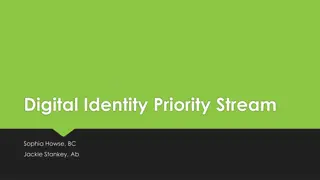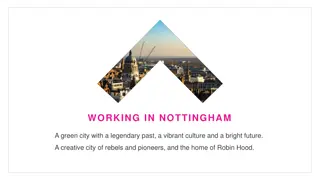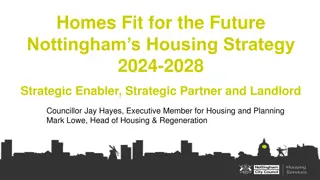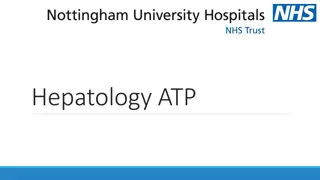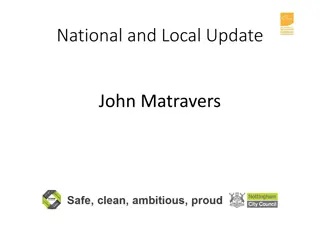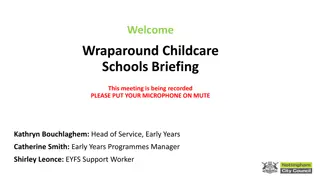Identity and the Robin Hood Legend in Nottingham's Economic Development Strategies
Early stage project examining Nottingham's identity in relation to economic development objectives, emphasizing the controversial role of the Robin Hood legend. Discusses the impact of creative, cultural, and heritage assets on place-making and employment issues. Explores the challenge of promoting an intangible legend to drive public policy and economic development decisions.
Download Presentation

Please find below an Image/Link to download the presentation.
The content on the website is provided AS IS for your information and personal use only. It may not be sold, licensed, or shared on other websites without obtaining consent from the author.If you encounter any issues during the download, it is possible that the publisher has removed the file from their server.
You are allowed to download the files provided on this website for personal or commercial use, subject to the condition that they are used lawfully. All files are the property of their respective owners.
The content on the website is provided AS IS for your information and personal use only. It may not be sold, licensed, or shared on other websites without obtaining consent from the author.
E N D
Presentation Transcript
SCOS 2015 Nottingham Robin Hood Special Symposium Identity and the Robin Hood Legend in Nottingham s Economic Development Strategies Chris Lawton Senior Research Fellow, Division of Economics, Nottingham Business School 12 July, 2015
Introduction Early stage project building on a Consultancy Project, will feed into a future Consultancy Project - the Nottingham Post Great Nottingham Debates Looks at issues around Nottingham s identity in the context of place making and wider economic development objectives Autumn 2015 project identified: High unemployment compared to other medium and large UK cities (the 10 core cities); Low earnings and low supply/demand for skills issues with the quality of local employment; But a very positive story around creative, cultural and heritage assets together presenting an opportunity for anchor institutions (e.g. City and County Councils, large businesses, the two universities) to develop a shared narrative around identity or place making; The role of Robin Hood in this is highly controversial
The Robin Hood legend is A widely recognised element of Nottingham s identity in local, national and (especially) international perceptions An important element of place or destination marketing where assets, events and use of imagery in branding can help attract certain groups of tourists (e.g. families) and inward investment But it is a legend not a tangible historical figure or event (compared to the reinternment of Richard III in Leicester) Few physical assets that can be meaningfully related to the outlaw or his exploits: a statue; Sherwood Forest and the Major Oak; Nottingham Castle; several local churches This is a challenge for public policy/economic development requiring judgment of audience and assessment of risk But popularity and resonance means a long-running campaign by enthusiasts to raise the profile of Robin Hood
Sources and Approach Fieldwork, including interviews with: A prominent enthusiast/campaigner Nottingham businessmen who is frequently quoted in press + local TV and radio A senior representative of an organisation responsible for destination marketing covering Nottingham and the surrounding areas Review of press coverage particularly articles in the local newspaper The Nottingham Post (the main sponsor of the original Consultancy Project) Review of material on public policy and investment, including the Growth Plans published by Nottingham City and Nottinghamshire County Councils (2012) and the minutes of the Sherriff s Commission on Robin Hood (2009 and 2010) Review of campaign group publications the Worldwide Robin Hood Society blogs, articles, brand guidance and business survey A multi-disciplinary approach, interested in contested identity, power and public policy particularly economic development
Timeline 2005 Robin Hood Airport opened near Doncaster, South Yorkshire; Rebranding exercise: Slanty N logo commissioned by Experience Nottinghamshire for use by City and County Councils; replacing the previous Our Style Is Legendary branding. Slanty N dropped in 2008 2009 Closure of Tales of Robin Hood attraction; Sherriff s Commission reports to City Council Select Committee 2010 Ridley Scott s Robin Hood; Robin Hood month; significantly increased visitor numbers 2014 planned private sector led Discover Robin Hood attraction abandoned; Heritage Lottery Funding (HLF) bid successful for Castle re-development, including Robin and the Rebels gallery First International Robin Hood Day & Robin Hood Pageant in October 2015 WWRHS stage Robin Hood business awards and business and branding survey with local press coverage
The Enthusiasts Perspective Perception that under-utilisation of Robin Hood a deliberate decision of public bodies; negative perceptions of the value of the legend by some businesses A failure to back Robin Hood consistently by public bodies Competition with other areas need to reclaim Robin Hood for Nottingham Perception of conflict between emerging strategic priorities in Nottingham: emphasis on technology-based, creative (e.g. digital content and gaming clusters) in Growth Plans seen as conflicting with traditional Robin Hood associations Belief that physical assets are under-developed and branding is under- used - very strong focus on branding (WWRHS has issued branding guidance) Continued reference to Slanty N branding campaign replacing Our Style is Legendary . Termed as a fiasco A strong personal identification with a characterisation of Robin Hood
The Perspective of Public Bodies A hugely important element for place making in Nottingham, but care needed Recognise high international profile and association with city But limited tangible assets a challenge for destination marketing risk of raising expectations/generating negative visitor perceptions Therefore more about imagery and ideas Previous/proposed commercial attractions have failed due to insufficient visitor numbers or lack of commercial viability Imagery, events and activities have more appeal to certain groups i.e. families and the Robin Hood Pageant or Robin Hood Tour Failure of previous branding campaigns due to an over-focus on Robin Hood in isolation. Perception of a branding problem leads to one-size fits all Successful place-making needs to present a coherent narrative, elements of which appeal to different groups i.e. Rebellion and Creative and Cultural assets embedding Robin Hood alongside contemporary characteristics The Castle Redevelopment will be the most tangible, credible asset in 2020 Need to manage expectations and emphasise other positives
Ideas on Heritage, Outlaw Myths and Identity from the Literature Relevant perspectives include Heritage tourism (and issues of authenticity and ownership of identity); e.g. Lyth, P., 2006; Legend, heritage and identity (power, conflict and contested identities); e.g. Anico, M. and Peralta E. (eds), 2009; The role of local government in identity, heritage and culture, and links to wider competitiveness, cohesion and development strategies; e.g. Boddy M. and Parkinson M. (eds), 2004; Specific issues around outlaw or bandit narratives and relevance to contemporary issues; e.g. Dodds, B, 2011; Seal, G., 2011; Other perspectives need development branding, place-marketing
Concluding thoughts and further research Branding-centric view of place making (both from campaigners/enthusiasts and some earlier academic work*) Contrasts with a concern for a wider narrative of place that appeals to different audiences e.g. Manchester post-2000 Olympic bid; 2020 HLF Nottingham Castle Robin and the Rebels gallery Conflict over ownership and interpretation significant and complex in the case of a legendary figure Changing balance of power and influence between public institutions and well-connected, influential amateur campaigners review of coverage shows strong preference in local media for negative interpretations of extent of success in incorporating Robin Hood in formal place making activities Autumn 2015 next Great Nottingham Debate requires new research inputs on place making and identity, including EU cases * Fernandez Young, A. and Crosland-Taylor, E., 2010. University of Nottingham DeHaan Institute of Tourism
